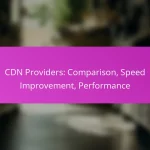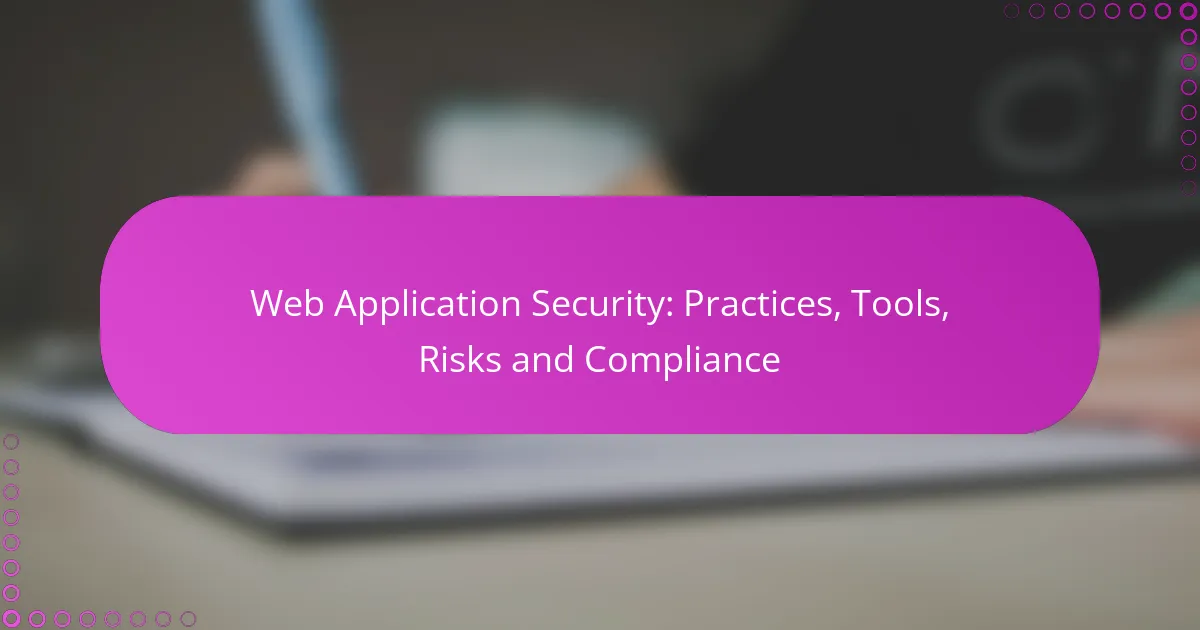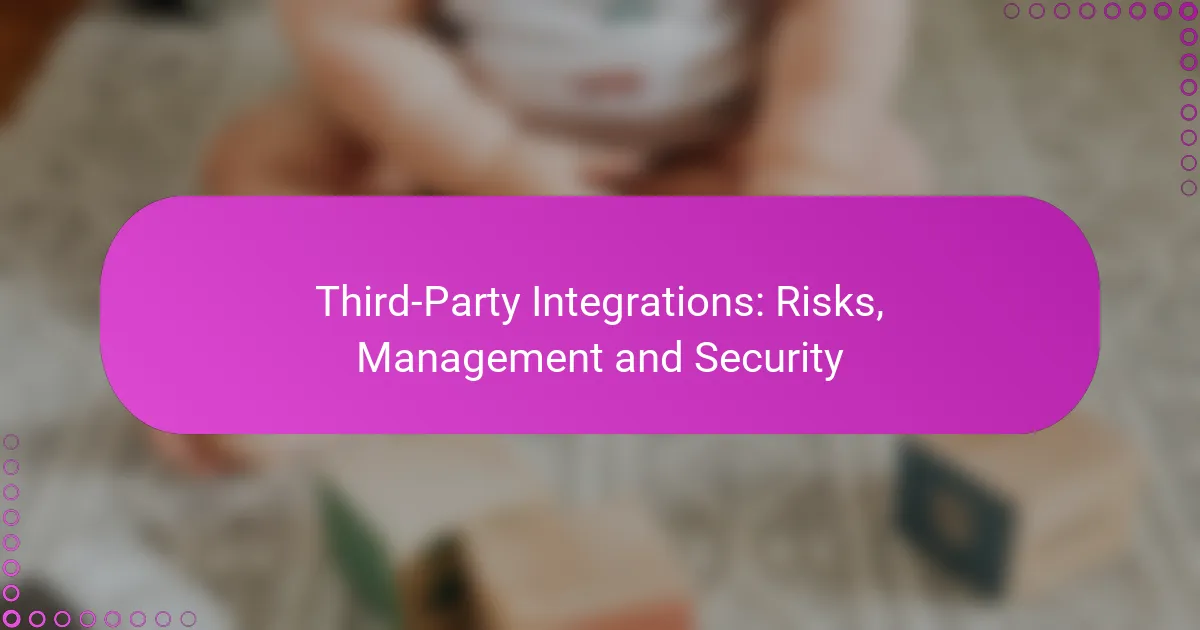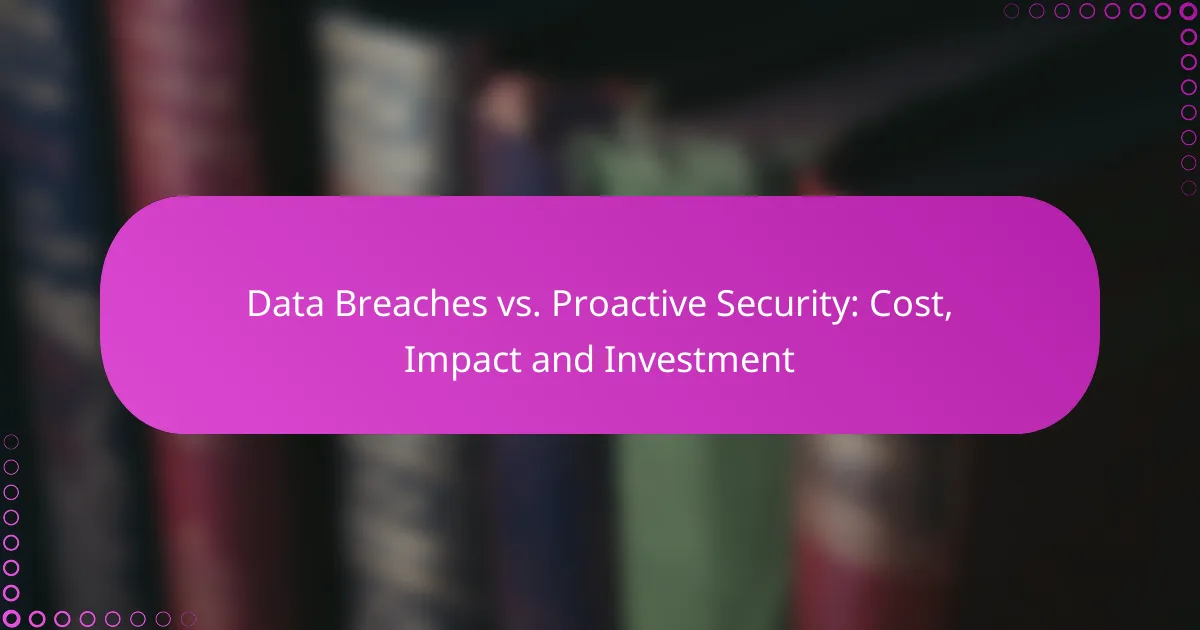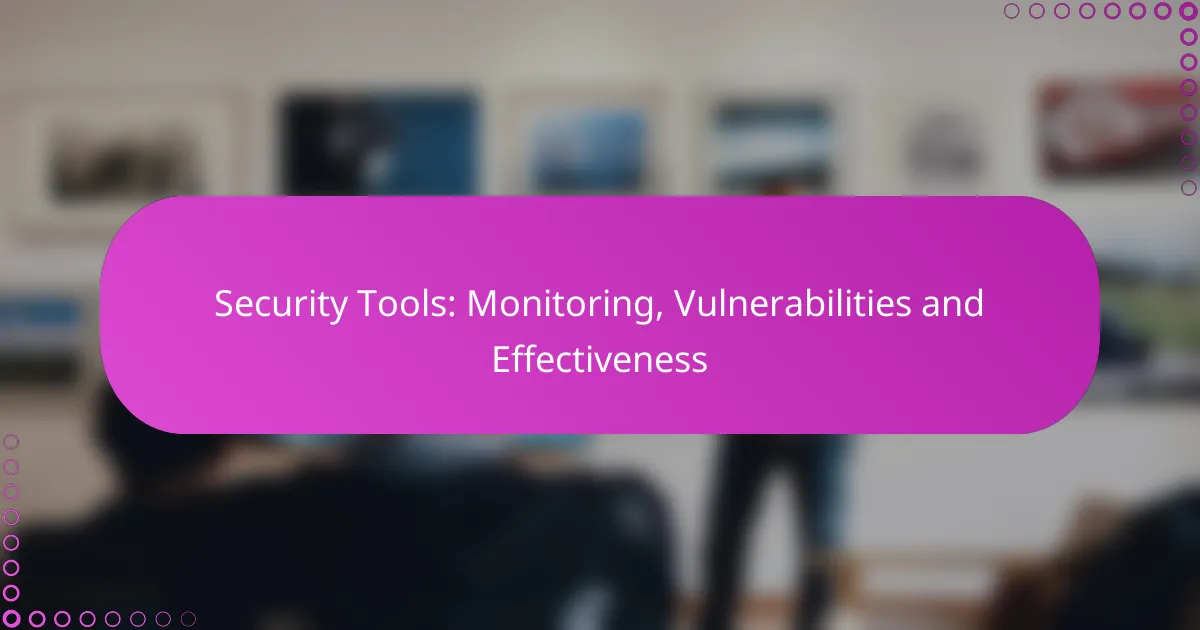Web application security is essential for safeguarding sensitive data and maintaining compliance with regulations. By adopting best practices and utilizing various security tools, organizations can effectively mitigate risks associated with vulnerabilities and potential attacks. Understanding the common threats is crucial for developing a robust security strategy that protects applications and user information.
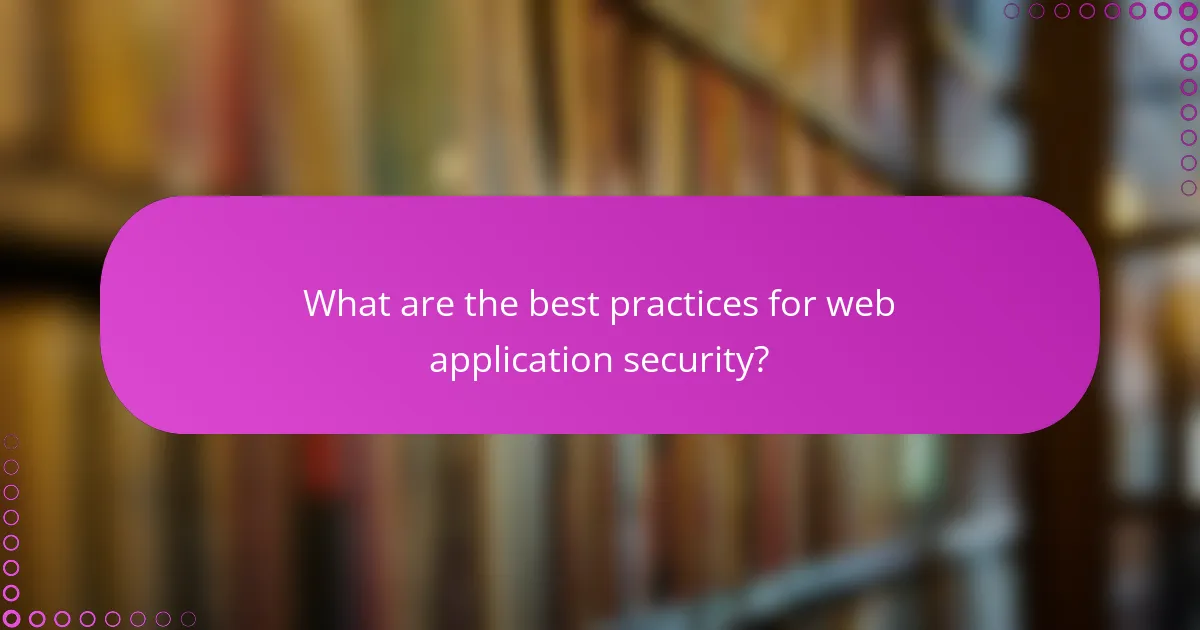
What are the best practices for web application security?
Best practices for web application security involve a combination of proactive measures designed to protect applications from threats and vulnerabilities. Implementing these practices can significantly reduce the risk of data breaches and ensure compliance with relevant regulations.
Input validation techniques
Input validation techniques are crucial for preventing malicious data from being processed by your web application. This involves checking user inputs against a set of rules to ensure they meet expected formats and types, such as using regular expressions for email addresses or limiting input lengths.
Common methods include whitelisting acceptable values and employing sanitization processes to remove harmful characters. Always validate inputs on both the client and server sides to enhance security.
Regular security audits
Conducting regular security audits helps identify vulnerabilities in your web application before they can be exploited. These audits should include code reviews, penetration testing, and vulnerability scanning to assess the security posture of the application.
Schedule audits at least annually or after significant updates to the application. Engaging third-party security experts can provide an objective assessment and uncover issues that internal teams might overlook.
Secure coding standards
Adhering to secure coding standards is essential for minimizing vulnerabilities in your web application. Standards such as OWASP’s Top Ten provide guidelines on common security risks and how to mitigate them through proper coding practices.
Developers should be trained in these standards and encouraged to follow them consistently. Implementing code reviews and automated tools can help enforce these practices throughout the development lifecycle.
Data encryption methods
Data encryption methods protect sensitive information both in transit and at rest. Using protocols like HTTPS ensures data is encrypted during transmission, while encryption algorithms such as AES can secure stored data.
Ensure that encryption keys are managed securely and rotated regularly. Compliance with regulations such as GDPR may require specific encryption standards to protect personal data.
Access control measures
Access control measures are vital for restricting unauthorized access to your web application. Implement role-based access control (RBAC) to ensure users only have permissions necessary for their roles, minimizing the risk of data exposure.
Regularly review and update access permissions, especially when users change roles or leave the organization. Implementing multi-factor authentication (MFA) can further enhance security by adding an extra layer of verification for users accessing sensitive areas of the application.
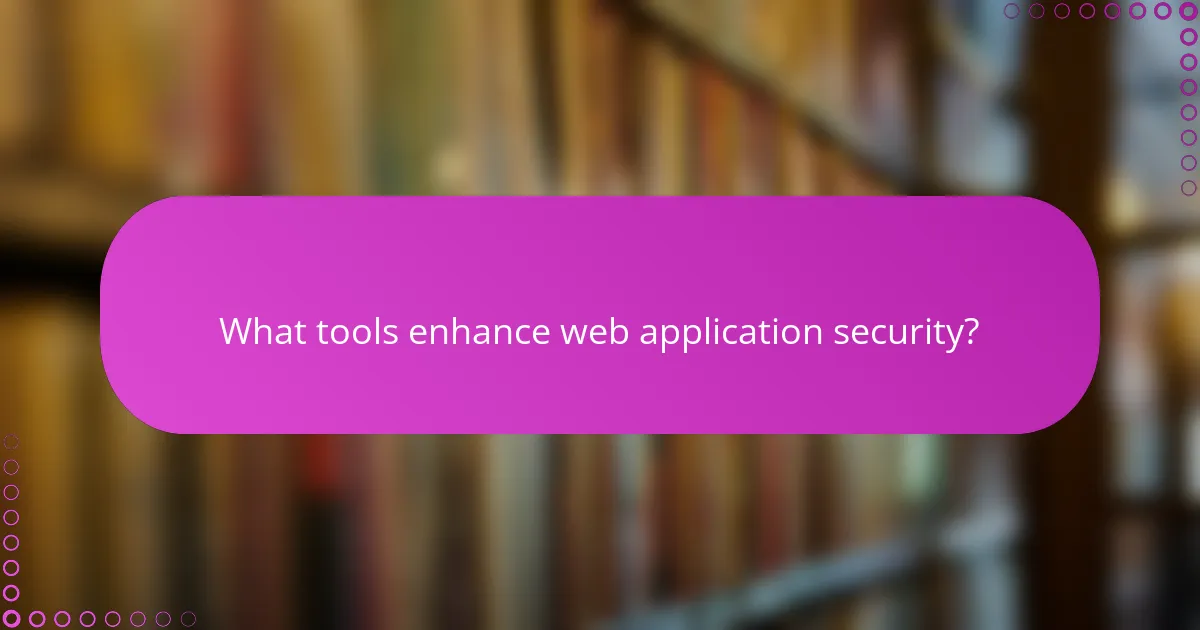
What tools enhance web application security?
Various tools significantly improve web application security by identifying vulnerabilities, testing defenses, analyzing code, and providing protection against attacks. Utilizing a combination of these tools can help organizations strengthen their security posture and comply with industry standards.
OWASP ZAP for vulnerability scanning
OWASP ZAP (Zed Attack Proxy) is a widely used tool for vulnerability scanning in web applications. It helps identify security flaws by simulating attacks on the application, allowing developers to fix issues before deployment.
To effectively use OWASP ZAP, start by configuring it to crawl your application and then run active scans. Regular scans should be part of your development cycle to catch vulnerabilities early. Remember to review the generated reports for actionable insights.
Burp Suite for penetration testing
Burp Suite is a comprehensive platform for performing penetration testing on web applications. It allows security professionals to identify and exploit vulnerabilities, providing a detailed view of potential security risks.
When using Burp Suite, focus on its various tools such as the scanner, intruder, and repeater. Set clear objectives for your penetration tests, and ensure you have permission to test the target application. This tool is particularly effective for manual testing and can be integrated into automated workflows.
Fortify for static code analysis
Fortify is a static code analysis tool that helps developers identify security vulnerabilities in their code before it runs. By analyzing source code, it can detect issues such as SQL injection, cross-site scripting, and insecure configurations.
To maximize Fortify’s effectiveness, integrate it into your continuous integration/continuous deployment (CI/CD) pipeline. Regularly review the findings and prioritize fixing high-risk vulnerabilities. This proactive approach can significantly reduce security risks in production environments.
Cloudflare for DDoS protection
Cloudflare provides robust DDoS protection for web applications, helping to mitigate attacks that aim to overwhelm servers and disrupt services. Its global network absorbs traffic spikes, ensuring availability even during an attack.
To implement Cloudflare effectively, configure its security settings according to your application’s needs. Utilize features like rate limiting and Web Application Firewall (WAF) to enhance protection. Regularly monitor traffic patterns to adjust your security measures as necessary.

What are the common risks in web application security?
Common risks in web application security include vulnerabilities that can be exploited by attackers to gain unauthorized access, manipulate data, or disrupt services. Understanding these risks is crucial for implementing effective security measures and protecting sensitive information.
SQL injection vulnerabilities
SQL injection occurs when an attacker inserts malicious SQL code into a query, allowing them to manipulate the database. This can lead to unauthorized access to sensitive data, data modification, or even deletion. To mitigate this risk, developers should use prepared statements and parameterized queries, which separate SQL code from user input.
Regularly testing applications for SQL injection vulnerabilities using automated tools can help identify weaknesses. Additionally, implementing input validation and sanitization practices is essential to prevent malicious data from being processed.
Cross-site scripting (XSS) attacks
Cross-site scripting (XSS) attacks involve injecting malicious scripts into web pages viewed by other users. This can lead to session hijacking, data theft, or the spread of malware. To defend against XSS, developers should validate and encode user input, ensuring that any data displayed on a webpage is treated as text rather than executable code.
Utilizing Content Security Policy (CSP) headers can further reduce the risk of XSS by restricting the sources from which scripts can be executed. Regular security audits and code reviews can help identify potential XSS vulnerabilities before they can be exploited.
Data breaches and leaks
Data breaches occur when unauthorized individuals gain access to sensitive information, often due to inadequate security measures. Common causes include weak passwords, unpatched software, and misconfigured servers. Organizations should implement strong authentication mechanisms, such as multi-factor authentication, to protect sensitive data.
Regularly updating software and conducting vulnerability assessments can help prevent data leaks. Compliance with regulations like GDPR or CCPA is also essential to ensure that personal data is handled securely and responsibly.
Session hijacking threats
Session hijacking involves an attacker taking control of a user’s session, allowing them to impersonate the user and access sensitive information. This can occur through techniques like cookie theft or session fixation. To prevent session hijacking, developers should use secure cookies, implement HTTPS, and regularly regenerate session identifiers.
Educating users about the importance of logging out from applications, especially on shared devices, can also help mitigate this risk. Monitoring user sessions for unusual activity can provide an additional layer of security against session hijacking attempts.

How does compliance impact web application security?
Compliance significantly influences web application security by establishing mandatory standards and practices that organizations must follow to protect sensitive data. Adhering to these regulations not only mitigates risks but also builds trust with users and stakeholders.
GDPR requirements for data protection
The General Data Protection Regulation (GDPR) mandates that organizations handling personal data of EU citizens implement strict data protection measures. Key requirements include obtaining explicit consent from users, ensuring data portability, and enabling the right to be forgotten.
To comply, businesses should conduct regular data audits, implement encryption, and establish clear data processing agreements with third parties. Non-compliance can lead to hefty fines, often reaching up to 4% of annual global turnover or €20 million, whichever is higher.
PCI DSS standards for payment security
The Payment Card Industry Data Security Standard (PCI DSS) outlines security measures for organizations that handle credit card information. Compliance involves maintaining a secure network, implementing strong access control measures, and regularly monitoring and testing networks.
Organizations must ensure that cardholder data is encrypted during transmission and storage. Regular security assessments and employee training are essential to meet these standards and avoid penalties, which can include fines and increased transaction fees.
HIPAA regulations for healthcare data
The Health Insurance Portability and Accountability Act (HIPAA) sets the standard for protecting sensitive patient information in the healthcare sector. Covered entities must implement physical, administrative, and technical safeguards to ensure the confidentiality, integrity, and availability of electronic protected health information (ePHI).
Healthcare organizations should conduct risk assessments, train staff on data privacy, and establish breach notification procedures. Failing to comply with HIPAA can result in significant fines and reputational damage, emphasizing the importance of robust security practices in healthcare web applications.
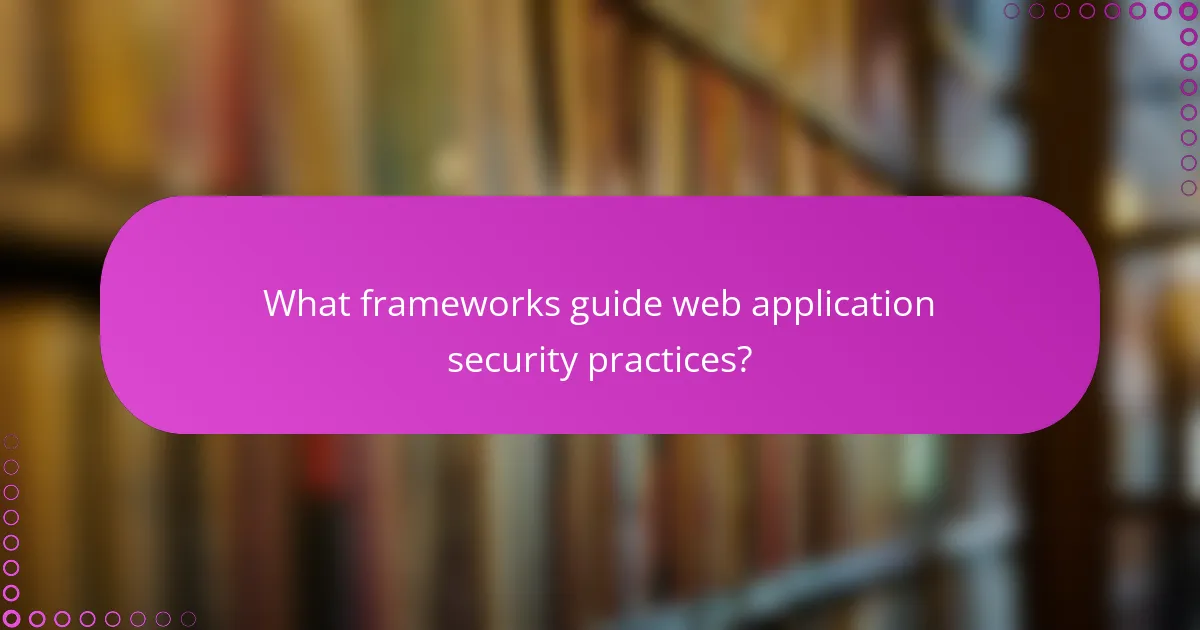
What frameworks guide web application security practices?
Web application security practices are guided by several established frameworks that provide structured approaches to identifying and mitigating risks. These frameworks help organizations implement effective security measures and ensure compliance with industry standards.
OWASP Top Ten framework
The OWASP Top Ten framework is a widely recognized resource that outlines the most critical security risks to web applications. It serves as a foundational guide for developers and security professionals to prioritize their security efforts based on the most common vulnerabilities.
Key risks identified in the OWASP Top Ten include issues such as injection flaws, broken authentication, and sensitive data exposure. Organizations should regularly review and address these vulnerabilities to enhance their application security posture.
To implement the OWASP Top Ten effectively, consider conducting regular security assessments and penetration testing. Use automated tools to scan for vulnerabilities and ensure that security training is provided to development teams.
NIST Cybersecurity Framework
The NIST Cybersecurity Framework provides a comprehensive approach to managing cybersecurity risks, including those related to web applications. It consists of five core functions: Identify, Protect, Detect, Respond, and Recover, which help organizations establish a robust security strategy.
Organizations should tailor the NIST framework to their specific needs, considering factors such as the size of the organization and the complexity of their web applications. Regularly updating security policies and conducting risk assessments are essential steps in maintaining compliance with this framework.
Utilizing the NIST Cybersecurity Framework can enhance communication about security risks within an organization. It also facilitates collaboration between technical and non-technical stakeholders, ensuring that security measures align with business objectives.

How to choose the right security tools?
Choosing the right security tools involves assessing your specific needs, understanding the threat landscape, and evaluating the effectiveness of available solutions. Prioritize tools that align with your organization’s risk profile and compliance requirements.
Assess your security needs
Begin by identifying the unique security requirements of your web application. Consider factors such as the type of data you handle, regulatory obligations, and potential threats. This assessment will guide you in selecting tools that address your specific vulnerabilities.
For example, if your application processes sensitive personal information, you may need tools that focus on data encryption and access controls. Conversely, a public-facing application might prioritize web application firewalls and intrusion detection systems.
Evaluate tool effectiveness
When evaluating security tools, consider their effectiveness in mitigating relevant risks. Look for tools that have been independently tested and validated against industry standards. User reviews and case studies can also provide insights into real-world performance.
Compare features such as ease of integration, scalability, and support services. Tools that offer comprehensive dashboards and reporting capabilities can help you monitor security incidents and compliance status more effectively.
Consider budget and resources
Your budget and available resources play a significant role in tool selection. Assess the total cost of ownership, which includes licensing fees, implementation costs, and ongoing maintenance. Balance your budget constraints with the need for robust security.
For instance, open-source tools can be cost-effective but may require more in-house expertise for implementation and management. In contrast, commercial solutions often provide better support but at a higher price point.
Stay updated on trends
The cybersecurity landscape is constantly evolving, so staying informed about the latest trends and threats is crucial. Regularly review industry reports, attend webinars, and participate in forums to keep your knowledge current.
Consider subscribing to security newsletters or following reputable cybersecurity blogs. This ongoing education will help you adapt your security strategy and toolset in response to emerging threats and vulnerabilities.

